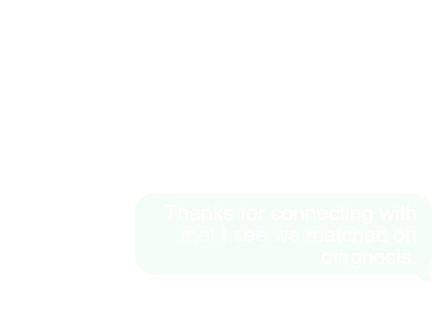
Photophobia
Eye Problems and Cancer Treatment:
Related: Cataracts, conjunctivitis (pink eye), dry eye syndrome, glaucoma, photophobia, and watery eyes.
Eye problems can occur for a variety of reasons.
In some cases, anti-cancer medications and medications used to reduce side effects may contribute to the development of some eye problems. Cataracts, dry eye syndrome, and chemo itchy eyes are some examples of eye problems resulting from cancer treatments.
Common Examinations for Eye Problems:
The following are common exams for eye problems that your eye doctor or healthcare provider may perform on you:
- Fluorescein or Rose Bengal staining: To perform this exam, your eye care professional or healthcare provider may put special eye drops into your eyes. Using a special light, they can see if there are any problems with the surface of your eyes. This may be done if eye problems include having eye pain, trauma, or a feeling of itchy eyes.
- Ophthalmoscopy: This is when your healthcare provider uses an ophthalmoscope, to look at the back of your eye. They can see the structures of the eye, such as the lens, retina, blood veins and vessels. Your healthcare practitioner may do this in the office, whenever you notice any eye problems.
- Pupil dilation: The pupil is widened with special eye drops, to allow your healthcare provider or eye care professional to look more closely at the back of your eye.
- Tonometry: This test is performed when the examiner wants to check the fluid pressures in the eye. It may be using a manual, hand-held device, or a more modern machine that blows a "puff" of air into your eye. Increased pressure in your eye may be a sign of glaucoma.
- Visual acuity test: Your eye examiner will use a chart to test how well you can see at different distances. This test may be performed when you are getting new glasses or contact lenses.
Photophobia
Some medications such as cytarabine, fluorouracil, isotretinoin and tretinoin may contribute to the development of photophobia.
What is photophobia?
- Photophobia is a word to describe the avoidance of light due to pain. This may commonly be a result of injury to the cornea, or inflammation of the uveal tract, and their surrounding muscles. The cornea is the clear covering of the eye. The uveal tract contains many structures that are important for your eye to function properly.
- During exposure to light, your pupils constrict, or become smaller (these are the dark areas in the middle of your eye). Swelling of any of the eye structures may cause pain when your pupils are constricting.
- Eye problems involving photophobia are commonly due to migraine or severe headaches, trauma to the eye, or certain drugs, such as chemotherapy and immune therapy.
- Patients may notice photophobia if they are diagnosed with certain diseases. These may include rheumatoid diseases, such as Reiter's syndrome, inflammatory bowel disease, lupus erythematosus, sarcoidosis, and rheumatoid arthritis. Certain viruses or infections, such as syphilis, varicella zoster, or cytomegalovirus (CMV), or tuberculosis may also cause photophobia.
What are some symptoms of eye problems to look for?
- You may notice pain when you change from a dark to a light area. Most people experience photophobia when they go outside during the daytime.
Things you can do about eye problems:
- Most individuals with photophobia wear dark or colored glasses (similar to sunglasses). This will decrease the amount of light that enters your eye, and make you less sensitive to light.
- The most common treatment is removing the underlying cause of the eye problems. If you have an inflammation of the eye, caused by a virus such as varicella zoster, or cytomegalovirus (CMV), treatment of these diseases may improve your photophobia. This should be discussed with your doctor.
- Follow all the instructions your doctor provides.
- Make sure to keep all appointments.
- Do not share your medications with anyone.
Drugs that may be prescribed by your doctor:
- Steroids applied to the eyes (such as dexamethasone eye drops), may be prescribed.
- Your healthcare provider may suggest steroids in a pill form, if your symptoms are severe.
- You may be referred to an ophthalmologist or eye care specialist for monitoring. Photophobia may be a sign of a serious disease.
When to call your doctor or health care provider about eye problems:
- If you develop any sudden severe eye pain.
- If you have a sudden loss of vision.
- If your eyes become sensitive to light, or if you see halos around your eyes.
- If your symptoms of eye problems worsen or do not improve within 3 days of treatment.
- As always, notify your doctor or healthcare provider if you are concerned about any of the symptoms you are experiencing.
Note: We strongly encourage you to talk with your health care professional about your specific medical condition and treatments. The information contained in this website about eye problems and other medical conditions is meant to be helpful and educational, but is not a substitute for medical advice.
Below are a few resources if you are interested in learning more about other forms of eye-related illnesses.
Glaucoma Research Foundation
200 Pine Street, Suite 200
San Francisco, CA 94104
Web site: http://www.glaucoma.org
National Eye Institute
Information Office
2020 Vision Place
Bethesda, MD 20892-2510
301-496-5248
Web site: http://www.nei.nih.gov
Note: We strongly encourage you to talk with your health care professional about your specific medical condition and treatments. The information contained in this website about eye problems and other medical information is meant to be helpful and educational, but is not a substitute for medical advice.
Related Side Effects
Photophobia has related side effects:
Clinical Trials
Search Cancer Clinical Trials
Carefully controlled studies to research the safety and benefits of new drugs and therapies.
SearchPeer Support
4th Angel Mentoring Program
Connect with a 4th Angel Mentor and speak to someone who understands.
4thangel.ccf.org
